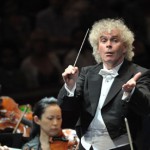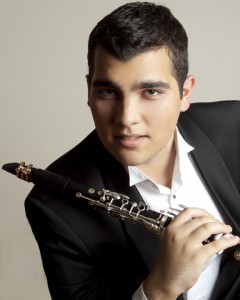After a relatively quiet January and early February, a slew of renowned orchestras invaded Carnegie Hall in what seemed like a new orchestral movement. Curiously enough, they weren’t all moving together or feeling the music with unity. As a result, it wasn’t necessarily the most famous ensembles that made the greatest and lasting impressions. A talented player’s natural musical movements as a solo or chamber music performer are absolutely crucial to use in the collective music-making of an orchestra section because it is important to the visceral excitement that captivates the audience; this is especially necessary in today’s visual world. The stellar performances at Carnegie Hall emanated from the orchestras that moved with the music harmoniously and had the best chemistry.
The Vienna Philharmonic is known for swaying together with the music, but they often didn’t this time around; guest conductor Lorin Maazel sometimes didn’t have the ideal communication with the players, and the orchestra often seemed uninspired. Some players surprisingly sat stiffly in their chairs and formally went about business as usual in orchestral music to Wagner’s “Ring”. They’ve played this music a great deal, but mostly from the pit at the Vienna State Opera. In fact, they often moved and looked like they were in the pit, seemingly disinterested about how they appeared as a collective unit. This attitude sometimes negatively affected their sound. Berlin, on the other hand, presented a string section in which everyone passionately moved together, wherever the phrases took them, and they used their bow exactly the same way (the Juilliard Orchestra under Alan Gilbert recently performed “The Rite of Spring” in this fashion). Even Berlin’s string tremolos in music of Mahler (the 2nd) and Bruckner (the 9th) had the type of invested energy that a pack of lions or a defensive tackle has when they go in for the kill. There were sweat and tears on each note. It doesn’t hurt, of course, that music director Simon Rattle and the Berliners are having a love affair. Rattle’s connection with the music is infectious, and it kept spreading with every measure. Perhaps the Berlin Philharmonic should have its own gold coin too.
David Robertson has the same effect on St. Louis Symphony musicians that Rattle does with his—even though Robertson has only been there a short while. “The Firebird” (complete ballet) sizzled with energy, and the cellos and first violins—most visible because they are on the outside and close to the audience—used full bows when needed and swayed together with the direction of the phrases, staying deeply involved at every microcosm of change in the musical atmosphere. The players’ expressions were what you typically see from a talented conductor: totally in character at all times. Robertson motivated the players, and in turn the players inspired the audience. Concertgoers need to see players’ involvement in the same way the orchestra needs to see the conductor’s devotion.
The brass sections are another way to compare. Boston Symphony’s brass—as well as the Vienna Philharmonic’s—did not shine like those of Berlin and St. Louis. And it’s a fair comparison because the music (and its corresponding sound-expectation) I am referring to was from large orchestral works of the Late Romantic and 20th century periods. In Vienna’s case, their brass needs to be asked to play with a big sound when needed because Richard Strauss always made a point of telling conductors to never encourage the Vienna brass, and this tradition has stuck, it seems (Maazel didn’t encourage them enough in Wagner’s music). In the case of Boston, perhaps they are an aging brass section; they did not play with much collective power in Shostakovich’s Symphony No. 5, conducted by Deneve, nor in the Symphonie Fantastique conducted by Eschenbach. The rest of the orchestra, for that matter, had trouble staying together some of the time, as Deneve was constantly pushing the tempo in ways the orchestra wasn’t used to, and Eschenbach was often fussing with the tempo (as if there aren’t enough tempo changes in Berlioz). Granted, the Boston Symphony had the disadvantage of working with three different guest-conductors, John Oliver taking over for Masur, who took over for Levine, Eschenbach and then Stephane Deneve, who made his Carnegie Hall debut.
St. Louis seemed proud of its current brass section; some of them are temporary position players—but they blended well and it seemed that they were excited to be on stage—and off stage, as a matter of fact. In the “Firebird”, Robertson showcased extra trumpets in the 1st tier boxes for antiphonal effect—a novel and great idea for this work—and they sounded robust and solid to the core, echoing the sonic brilliance on stage. I hope that Carnegie gives St. Louis at least two concerts next time they come to Carnegie.
Rattle and Robertson are the right fit for their orchestras. One can hope that Vienna will fare better with Franz Welser-Most on the podium when they visit Carnegie next year. Those who missed Berlin at Carnegie will sadly have to wait another two years. Boston has a big question-mark until they get a new music director. It will be up to that person to instill a sense of complete commitment in the music-making and also remind the players that the way an orchestra moves together—especially the outside players close to the audience—is integral to the audience’s satisfaction of a live performance. Otherwise, why bother? YouTube has fantastic close-up footage of unified orchestras moving to the music and homogeneously expressing its emotion. When it comes to live performances, we often need a new orchestral movement.
Orchestra Stars (out of 4)
Berlin Philharmonic ****
St. Louis Symphony ****
Vienna Philharmonic **1/2
Boston Symphony **






